The British sportscar market took a dramatic turn during the mid-1970s following the introduction of the Giorgetto Giugiaro-penned 'folded paper' styling on the dramatically wedge-shaped Lotus Esprit. Its popularity would allow it to remain in production for over two decades, receiving numerous styling and engineering enhancements over the years. 
Coupe
Chassis #: SCCDC082X2HA10412
View info and history
Auction entries : 1The Lotus' reputation was built atop its legendary sports and racing cars, noted for their lightweight construction and superb handling characteristics. The Esprit would continue the Lotus tradition, serving as a successor to the Europa. Work began in 1971 following meetings with Lotus founder Colin Champman and designer Giorgetto Giugiaro. The production model was introduced in 1975 at the Paris Motor Show. The genesis of the idea began in 1970 with engineer Tony Rudd, who had proposed two new models, the first being Project M50 which birthed the 1974 Elite, and the second was the Project M70, which became the Europa. The latter would be a two-door fixed-head mid-engine coupe with a polygonal 'fold paper' design with a low stance, wedge shape, and pop-up headlights. Styling was inspired by Giugiaro's Maserati Boomerang concept which was introduced in 1971 at the Turin Motor Show.Produced from 1976 to 2004, a total of 10,675 examples of the exotic Lotus Esprit were built.The Series 1 Lotus Esprit
Lotus would create four 'Series' of Esprit, with the first being introduced in October 1975 at the Paris Motor Show, entering production in June 1976, and built through 1978. A total of 718 examples of the Lotus Esprit 'S1' were built.
Coupe
Chassis #: SCCDC082X2HA10412
View info and history
Auction entries : 1The Series 1 rested on a 96-inch wheelbase platform and had an overall length of 167.7 inches, stood 43.7 inches tall, and was 73.3 inches wide. The fiberglass body was mounted on a steel backbone chassis, and a 1,973cc Lotus 907 four-cylinder engine was installed mid-ship. Output was rated at 160 horsepower in European guise and 140 horsepower for examples sent to the United States (due to U.S. emissions requirements). The Citroen C35 five-speed manual transaxle was sourced from the Citroen SM (and Maserati Merak). Disc brakes were at all four corners with the rears mounted inboard. The rear suspension used lower lateral links and tapering box-section trailing arms, while the front relied on upper A-arms and lower lateral links triangulated by the anti-roll bar. Steering was by an unassisted rack and pinion.Performance was 'adequate' but below expectations of a 'supercar,' with zero-to-sixty mph accomplished in eight seconds and a top speed of 133 mph. The Series 2 Lotus Esprit
The first major styling revisions occurred in 1978, resulting in the Series 2 (or S2). The taillights from the Rover SD1 and an integrated front spoiler were installed, along with intake and cooling ducts behind the rear quarter windows. The battery was moved from above the right-side fuel tank (under the rear quarter window), to the rear of the car. The interior received many switches and buttons from the Morris Marina, wider seats, and individual gauges made by Smiths (replacing the previous Veglia instrument cluster).
Coupe
Chassis #: SCCDC082X2HA10412
View info and history
Auction entries : 1Dimensions remained mostly unaltered, with the length growing by nearly an inch, to 168.5 inches. Power continued to come from the Type 907 inline four until the arrival of a 2.2-liter Type 912 engine in May 1980. Esprit's equipped with this engine were known as the S2.2. Engine output remained unchanged, but torque rose by 20 lb-ft (to 160 lb-ft). Produced from 1978 to 1982, a total of 1,149 Series 2 Esprits were built, including 88 Series 2.2 and approximately 149 Commemorative Edition Esprits. Lotus claimed 300 examples were built, but the excepted figure is closer to 149. The Commemorative Edition Esprits was built in honor of Lotus' victory in the 1978 Formula One World Championship. Each of the 149 examples built wore the livery of the team cars - black and gold of John Player & Sons (JPS), Lotus' F1 sponsor at the time. Mechanically identical to the Series 2, the Commemorative Edition had special seat and dash trim, a special plaque, and a smaller steering wheel.Another special edition model was the Essex Turbo Esprit, introduced in 1980. These models wore the blue, red, and chrome livery of the Essex Overseas Petroleum Corporation, the sponsor of Team Lotus from 1979 to 1981. These were the first factory turbocharged Esprit, albeit Lotus dealer Bell and Colvill had been offering turbo conversions for the S2 Esprit from as early as 1978. 
Coupe
Chassis #: SCCDC082X2HA10412
View info and history
Auction entries : 1The turbocharged 910 (dry sump) engine powering the Essex Turbo Esprit produced 210 horsepower at 6,250 RPM and 200 lb-ft of torque at 4,500 RPM. It is believed that forty-five examples of the Essex Turbo Esprit were built.The Series 3 and Turbo Esprit Lotus Esprit
The Lotus Esprit Series 3 was built from 1982 to 1988, with 3,041 examples constructed during that time. Power was courtesy of the 2.2 liter Type 912 engine, with the Turbo Esprit using a wet sump engine with the same power and torque output as its dry-sump predecessor. Larger bumpers distinguished the S3 from the S2, and gave it a length of 170.1 inches, nearly two inches longer than the S2. The body moulds changed slightly, and with revisions to the interior, including the trim, the result was more headroom and an enlarged footwell. The Turbo Esprit wore prominent 'turbo esprit' decals on the sides and nose, along with the aerodynamic body kit of the Essex cars.
Coupe
Chassis #: SCCDC082X2HA10412
View info and history
Auction entries : 1Incremental updates were applied, albeit minor, during the Series 3 production. In 1985, minor changes were made to the bodywork and the front suspension. Beginning in April of 1986, the engine received higher compression ratios, bringing output for the naturally aspirated unit to 170 hp and 160 lb-ft of torque. Known as the Esprit HC (for high compression), the turbocharged version also received higher compression, boosting output to 215 and 220 lb-ft of torque. The United States market received a fuel-injected version - the HCi - which used a Bosch KE-Jetronic fuel injection system and a catalytic converter to help the engine comply with stringent emissions requirements. Using the Turbo HC engine, it delivered the same peak horsepower as the carbureted version, but torque lowered to 274 Nm.The Peter Stevens Era
The Lotus Esprit had worn styling by Giugiaro for a little more than a decade when British designer Peter Stevens was tasked with giving it a fresh and modern appeal. Retaining the general shape, slope, and design, Stevens softened the lines, made it less angular, and more rounded. The mechanical components remained unchanged from the earlier HC Esprit and Turbo Esprit. The production of the body panels used a new process called VARI (Vacuum Assisted Resin Injection). Patented by Lotus, this process increased the Esprit's torsional rigidity by 22%, thanks in part to Kevlar being added as reinforcement to the roof and sides.
Coupe
Chassis #: SCCDC082X2HA10412
View info and history
Auction entries : 1Produced from 1988 to 1994, these Esprits did not use a new 'Series' number but are often referred to by their project code of X180. The Turbo Esprit version was now known as Esprit Turbo. The 1988 Esprit models destined for the U.S. received the Bosch fuel injection system and Citroen transaxle from the previous model year. The other X180 models were fitted with a new Renault UN-1 transaxle, which required the rear brakes to be positioned outboard. The K-Jetronic system was replaced in 1989 with a Lotus/Delco multi-point fuel injection (MPFI) system and an air-water-air intercooler called a Chargecooler by Lotus. These updates brought about a change to the engine name - now known as the Type 910S - and output was rated at 264 hp and 280 hp for the naturally aspirated and turbocharged versions, respectively. The Special Equipment (SE) model received the 910S engine and wore styling updates with five air ducts in the front air dam, wing mirrors from the Citroën CX, a rear wing, and side skirts. 
Coupe
Chassis #: SCCDC082X2HA10412
View info and history
Auction entries : 1The Esprit S was a lower-priced alternative with fewer amenities and reduced power. Very few examples were built. Lotus produced 1,672 examples of the Esprit between 1988 and 1994.The Julian Thomson Era
By the early 1990s, the Lotus Esprit was facing stiff competition from other 'budget-friendly' supercars and its popularity began to wane. To breathe new life into the model, Lotus commissioned Julian Thomson to update its design. Gently messaging the styling penned by Stevens, Thomson enhanced its sporty appeal with the addition of a smaller rear spoiler positioned halfway up the rear deck-lid, side skirts, valence panels, and revised bumpers. The taillights were borrowed from the Toyota AE86 and new five-spoke alloy wheels were placed at all four corners.
Coupe
Chassis #: SCCDC082X2HA10412
View info and history
Auction entries : 1Known as the Series 4 (or S4), production continued through 2004 with 3,630 examples built. Mechanical components remained consistent with the previous Esprit, with the engine continuing to develop 264 horsepower. Perhaps the most significant improvement was the addition of power steering, making the S4 the first Esprit so equipped. The S4 Sports (S4s) arrived in 1994, distinguished by a rear wing from the Sport 300. The 2.2 liter 910-series engine received enlarged inlet ports, cylinder head modifications, a re-calibrated ECM and a revised turbocharger, bringing output to 301 hp and 290 lb-ft of torque. 
Coupe
Chassis #: SCCDC082X2HA10412
View info and history
Auction entries : 1The GT3 was the final four-cylinder Esprit and a total of 190 examples were eventually built. It was powered by a 2.0-liter Type 920 turbocharged and Chargecooled engine. The interior housed a milled steel gearshift knob, a color-coded central tunnel, and a re-designed instrument binnacle. The Lotus Esprit V8
For two decades, the four-cylinder Esprit had done an admirable job competing in the competitive supercar market, relying on highly tuned mechanical components, lightweight construction, and attractive styling. Its opposition favored twelve cylinders and price tags that guaranteed exclusivity. In 1996, Lotus bridged the performance gap between the Esprit and its competitors by doubling the number of cylinders. Known as the Lotus Esprit V8, the new engine had a potential output of 500 horsepower. The 918 V8 Lotus engine was built from aluminum and had dual overhead camshafts, four valves per cylinder, a flat-plane crankshaft and two Garrett T25/60 turbochargers (no Chargecooler). For drivability and durability, output was detuned to 350 horsepower, allowing it to sprint from zero-to-sixty mph in 4.4 seconds and a top speed of 175 mph. The transaxle continued to be the Renault unit as before, but with a thicker single-piece input shaft.In 1998, the V8 range was offered as the SE or GT, with the SE favoring luxury. Both the SE and GT had similar performance and revised interiors.In 1999, the Lotus produced fifty examples of the Sport 350 which had several significant mechanical modifications, including a tuned engine delivering 350 horsepower. AP Racing brakes were installed, a revised ECU, and stiffer springs. Similar performance modifications were added to the exterior, including a larger carbon fiber rear wing on aluminum uprights.The Russell Carr Era
The final styling revisions bestowed upon the Esprit were courtesy of future Lotus Design head Russell Carr. Applied for the 2002 model year, the minor updates included replacing the Toyota AE86 taillights with a new design using the same round taillights as the Lotus Elise S2. The Esprit V8 25th Anniversary Edition
Celebrating a quarter-century of production for the Esprit, Lotus produced one hundred examples of a special version of the Esprit solely for the North American market. They wore aggressive fender flares, 17-inch front and 18-inch rear wheels, round taillights from the Elise S2, and equipped with a 'Type 918' 3.5-liter V8 engine developed by Lotus with twin Garrett turbochargers to produce 350 horsepower. Mated to a five-speed manual transaxle, zero-to-sixty mph took 4.4 seconds, and a top speed of 17 mph.The End
On February 20th, 2004, the final Lotus Esprit rolled off the production line and was sent to Chicago. During its 28-year production lifespan, a total of 10,675 examples of the Esprit were produced.
by Daniel Vaughan | Jul 2023
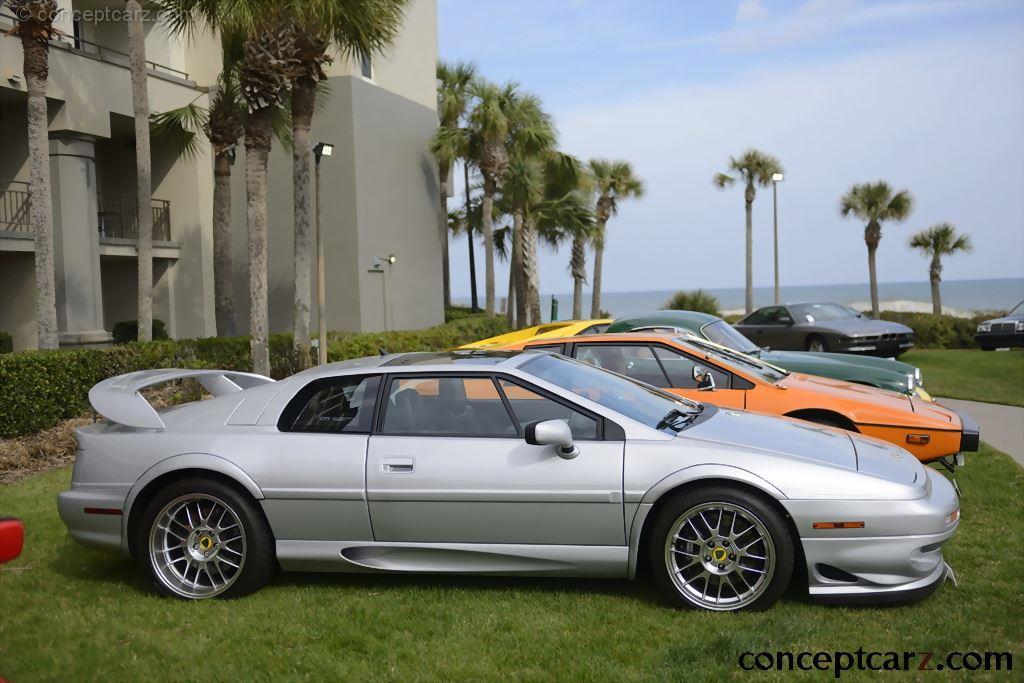
Coupe
Chassis #: SCCDC082X2HA10412
View info and history
Auction entries : 1
Lotus would create four 'Series' of Esprit, with the first being introduced in October 1975 at the Paris Motor Show, entering production in June 1976, and built through 1978. A total of 718 examples of the Lotus Esprit 'S1' were built.
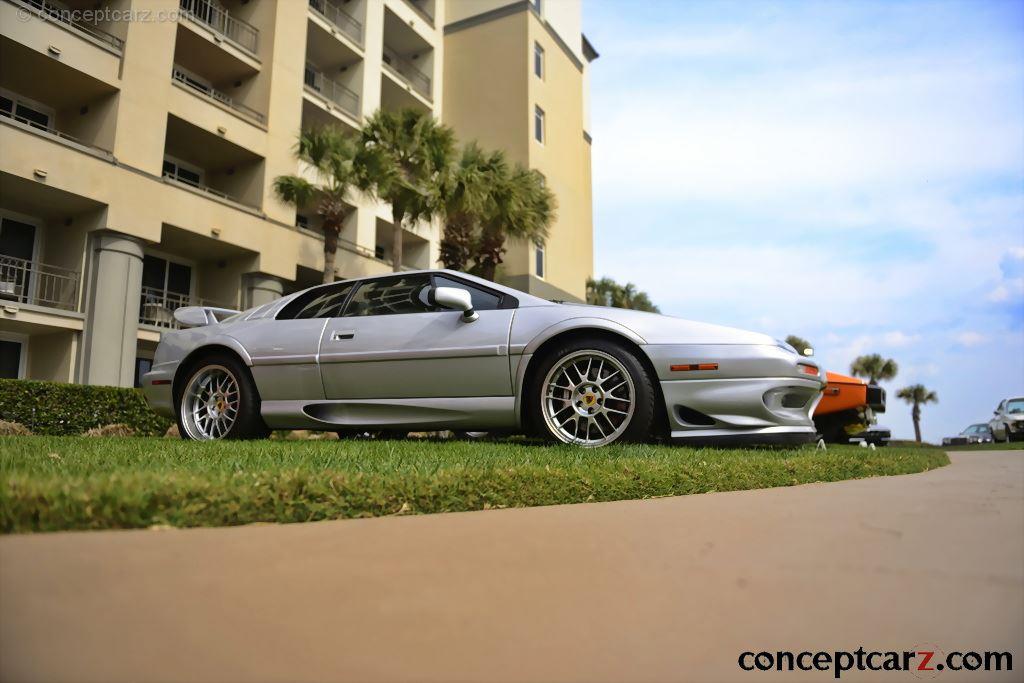
Coupe
Chassis #: SCCDC082X2HA10412
View info and history
Auction entries : 1
The first major styling revisions occurred in 1978, resulting in the Series 2 (or S2). The taillights from the Rover SD1 and an integrated front spoiler were installed, along with intake and cooling ducts behind the rear quarter windows. The battery was moved from above the right-side fuel tank (under the rear quarter window), to the rear of the car. The interior received many switches and buttons from the Morris Marina, wider seats, and individual gauges made by Smiths (replacing the previous Veglia instrument cluster).
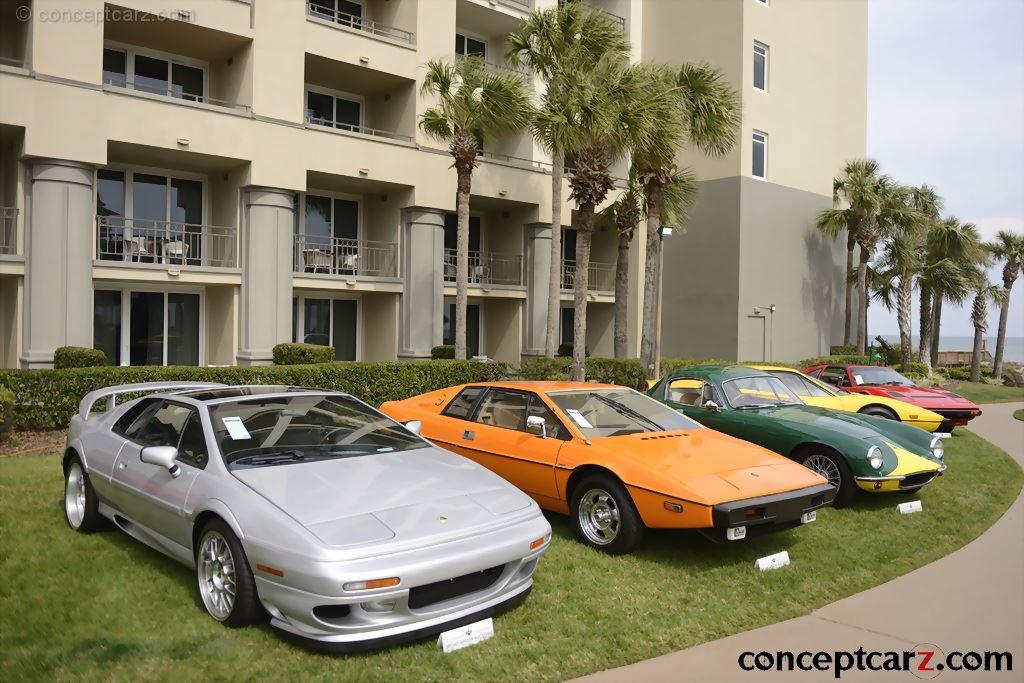
Coupe
Chassis #: SCCDC082X2HA10412
View info and history
Auction entries : 1
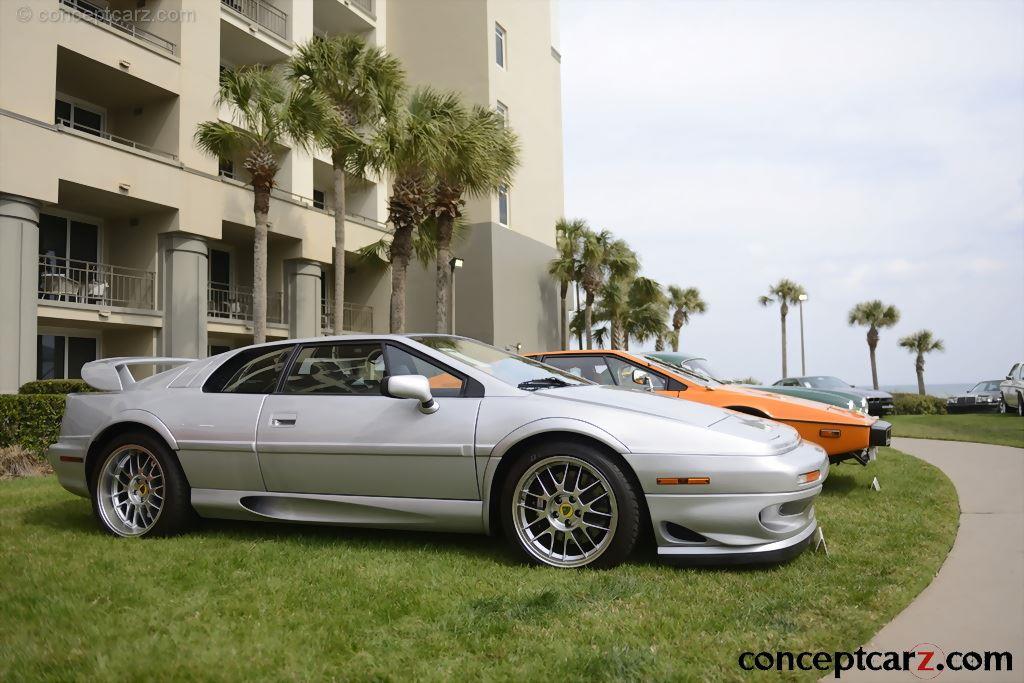
Coupe
Chassis #: SCCDC082X2HA10412
View info and history
Auction entries : 1
The Lotus Esprit Series 3 was built from 1982 to 1988, with 3,041 examples constructed during that time. Power was courtesy of the 2.2 liter Type 912 engine, with the Turbo Esprit using a wet sump engine with the same power and torque output as its dry-sump predecessor. Larger bumpers distinguished the S3 from the S2, and gave it a length of 170.1 inches, nearly two inches longer than the S2. The body moulds changed slightly, and with revisions to the interior, including the trim, the result was more headroom and an enlarged footwell. The Turbo Esprit wore prominent 'turbo esprit' decals on the sides and nose, along with the aerodynamic body kit of the Essex cars.
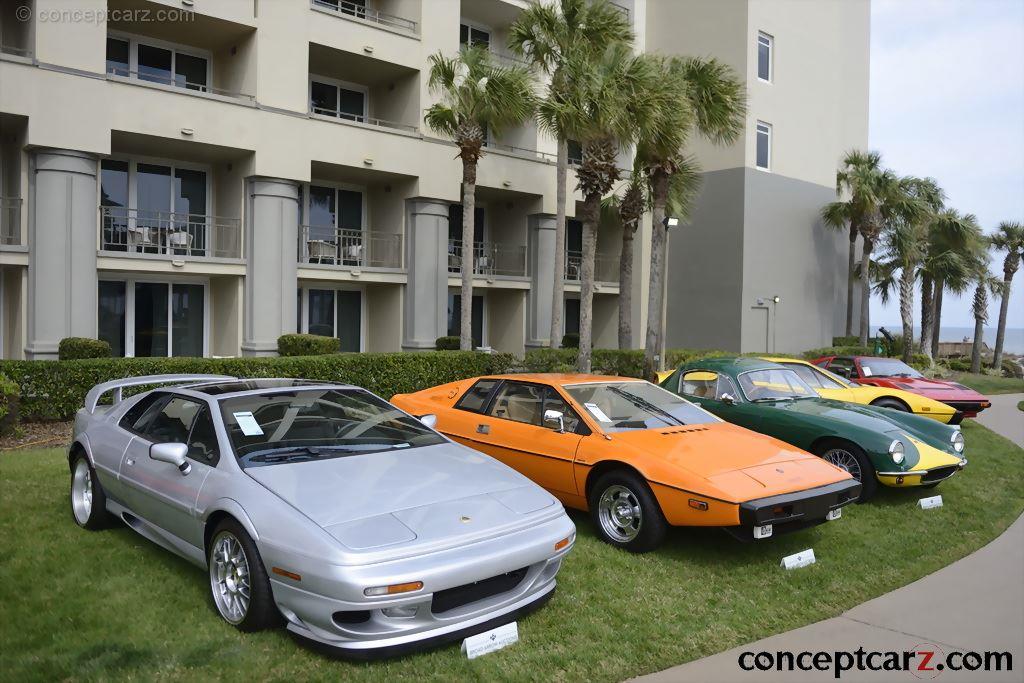
Coupe
Chassis #: SCCDC082X2HA10412
View info and history
Auction entries : 1
The Lotus Esprit had worn styling by Giugiaro for a little more than a decade when British designer Peter Stevens was tasked with giving it a fresh and modern appeal. Retaining the general shape, slope, and design, Stevens softened the lines, made it less angular, and more rounded. The mechanical components remained unchanged from the earlier HC Esprit and Turbo Esprit. The production of the body panels used a new process called VARI (Vacuum Assisted Resin Injection). Patented by Lotus, this process increased the Esprit's torsional rigidity by 22%, thanks in part to Kevlar being added as reinforcement to the roof and sides.
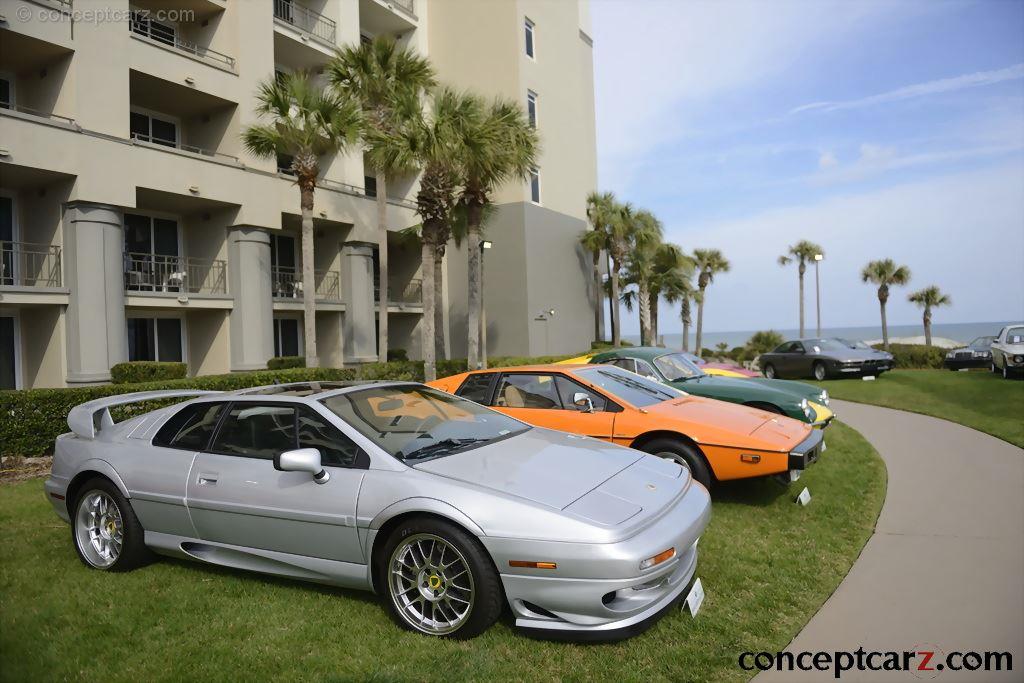
Coupe
Chassis #: SCCDC082X2HA10412
View info and history
Auction entries : 1
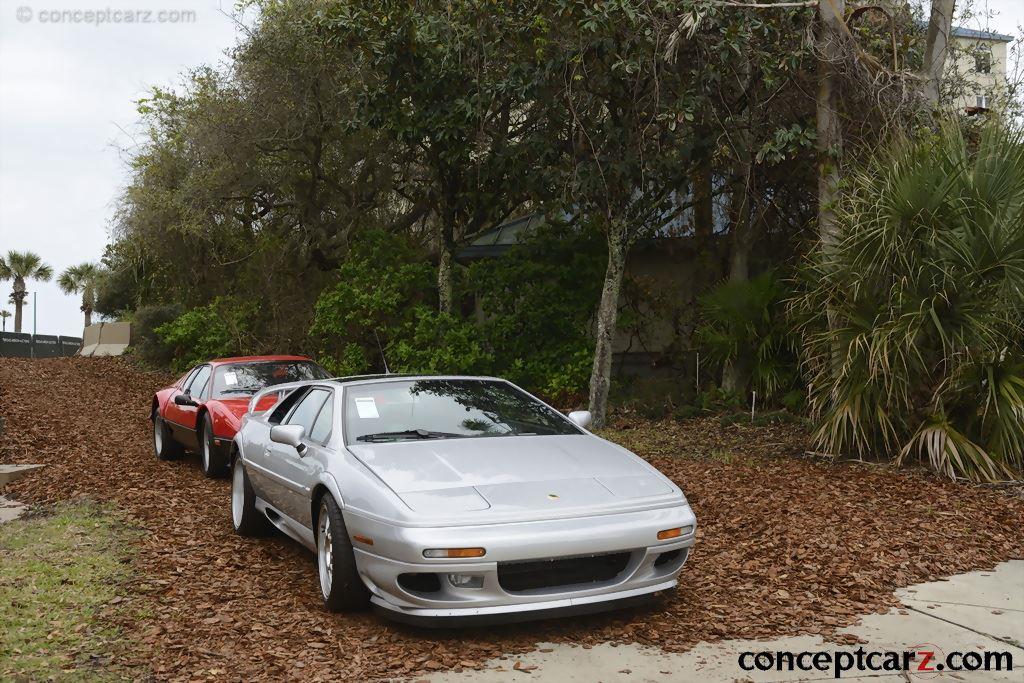
Coupe
Chassis #: SCCDC082X2HA10412
View info and history
Auction entries : 1
By the early 1990s, the Lotus Esprit was facing stiff competition from other 'budget-friendly' supercars and its popularity began to wane. To breathe new life into the model, Lotus commissioned Julian Thomson to update its design. Gently messaging the styling penned by Stevens, Thomson enhanced its sporty appeal with the addition of a smaller rear spoiler positioned halfway up the rear deck-lid, side skirts, valence panels, and revised bumpers. The taillights were borrowed from the Toyota AE86 and new five-spoke alloy wheels were placed at all four corners.

Coupe
Chassis #: SCCDC082X2HA10412
View info and history
Auction entries : 1

Coupe
Chassis #: SCCDC082X2HA10412
View info and history
Auction entries : 1
For two decades, the four-cylinder Esprit had done an admirable job competing in the competitive supercar market, relying on highly tuned mechanical components, lightweight construction, and attractive styling. Its opposition favored twelve cylinders and price tags that guaranteed exclusivity. In 1996, Lotus bridged the performance gap between the Esprit and its competitors by doubling the number of cylinders. Known as the Lotus Esprit V8, the new engine had a potential output of 500 horsepower. The 918 V8 Lotus engine was built from aluminum and had dual overhead camshafts, four valves per cylinder, a flat-plane crankshaft and two Garrett T25/60 turbochargers (no Chargecooler). For drivability and durability, output was detuned to 350 horsepower, allowing it to sprint from zero-to-sixty mph in 4.4 seconds and a top speed of 175 mph. The transaxle continued to be the Renault unit as before, but with a thicker single-piece input shaft.In 1998, the V8 range was offered as the SE or GT, with the SE favoring luxury. Both the SE and GT had similar performance and revised interiors.In 1999, the Lotus produced fifty examples of the Sport 350 which had several significant mechanical modifications, including a tuned engine delivering 350 horsepower. AP Racing brakes were installed, a revised ECU, and stiffer springs. Similar performance modifications were added to the exterior, including a larger carbon fiber rear wing on aluminum uprights.The Russell Carr Era
The final styling revisions bestowed upon the Esprit were courtesy of future Lotus Design head Russell Carr. Applied for the 2002 model year, the minor updates included replacing the Toyota AE86 taillights with a new design using the same round taillights as the Lotus Elise S2. The Esprit V8 25th Anniversary Edition
Celebrating a quarter-century of production for the Esprit, Lotus produced one hundred examples of a special version of the Esprit solely for the North American market. They wore aggressive fender flares, 17-inch front and 18-inch rear wheels, round taillights from the Elise S2, and equipped with a 'Type 918' 3.5-liter V8 engine developed by Lotus with twin Garrett turbochargers to produce 350 horsepower. Mated to a five-speed manual transaxle, zero-to-sixty mph took 4.4 seconds, and a top speed of 17 mph.The End
On February 20th, 2004, the final Lotus Esprit rolled off the production line and was sent to Chicago. During its 28-year production lifespan, a total of 10,675 examples of the Esprit were produced.
by Daniel Vaughan | Jul 2023
Related Reading : Lotus Esprit History
In November of 1972, Lotus introduced the Silver Car concept based on the Europa chassis. The design of the vehicle was courteous of Ital Designs Giorgetto Giugiaro. Giugiaro, who had led an illustrious career as a stylist beginning at Fiat and later moving on to Bertone, then Ghia. He began his own business, Ital Design in 1968. The idea behind the concept came from Tony Rudd, Lotuss Technical....
Continue Reading >>
Continue Reading >>
Related Reading : Lotus Esprit History
Desiring an upmarket car to help secure the Lotus future, the British specialist sports car maker began taking bids for a new model. Tony Rudd, the new technical director drew up plans in 1970 for two new models, a front-engined coupe dubbed M50, and a larger, mid-engined model named M70. The M70 was designed as a replacement for the Europa. Since funds were low, Lotus chose to go instead with the....
Continue Reading >>
Continue Reading >>
Similar Automakers
Similarly Sized Vehicles
from 2002
2002 Lotus Esprit V8 Vehicle Profiles
Recent Vehicle Additions
Performance and Specification Comparison
Price Comparison
Related Automotive News
2024 Porsche 718 Spyder RS becomes the pinnacle of open-top, mid-engine driving
Highly emotional engine and lightweight construction
Atlanta. Thirty years after the presentation of the Boxster concept car, Porsche is launching the most powerful version yet of the popular mid-engine roadster the new Porsche 718 Spyder...

Classic Engines Find Their Voice Again In Latest Audi Sport Models
More powerful Audi R8 V10 returns to the UK range alongside updated TT RS and RS 3 models available in new Audi Sport Edition specification
New TT RS Coupé and Roadster models now available to order in the UK priced from £53,905 OTR and £55,...

World Record Parade For Jaguar's Fastest Ever Production Supercar
Silverstone Classic to celebrate yet another motoring milestone
Unprecedented numbers of XJ220s to mark 25th anniversary
Amazing paddock display and special parade on famous GP circuit
Early Bird tickets on sale until the end of March
Jaguars r...
RENAULT ANNOUNCES UK SPECIFICATION AND PRICING FOR NEW RENAULT TWINGO GT AND ENHANCED DYNAMIQUE S
New Renault Twingo GT and updated Dynamique S available to order from 1st December
Renault Sport-developed Twingo GT produces 110hp and 170Nm torque
Engine upgrades include a modified turbocharger, revised engine mapping and specially-developed ex...

VOLKSWAGEN GTI ROADSTER MAKES NORTH AMERICAN DEBUT AT THE LOS ANGELES INTERNATIONAL AUTO SHOW
Spectacular concept car blurs the boundaries between the virtual and real worlds
HerndonLos Angeles — Volkswagen will show the spectacular GTI Roadster concept car in North America for the first time at the Los Angeles International Au...















